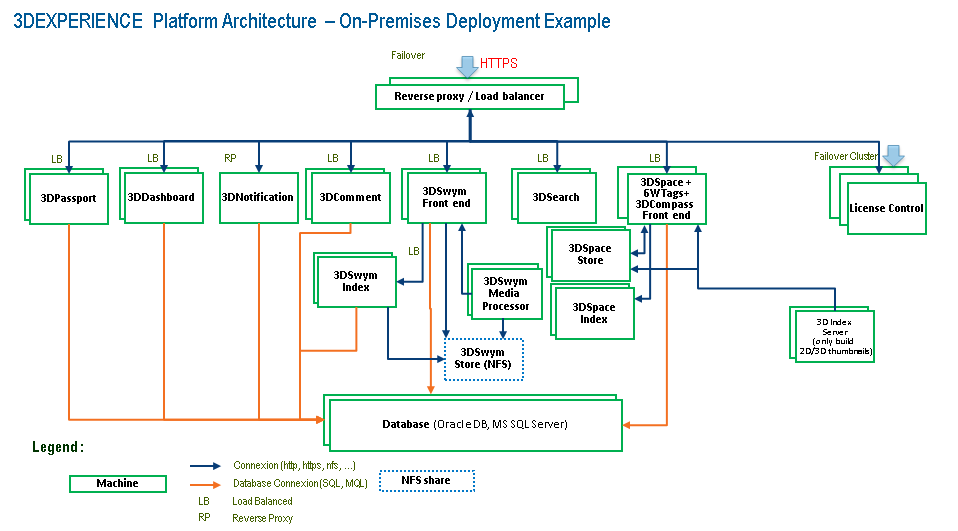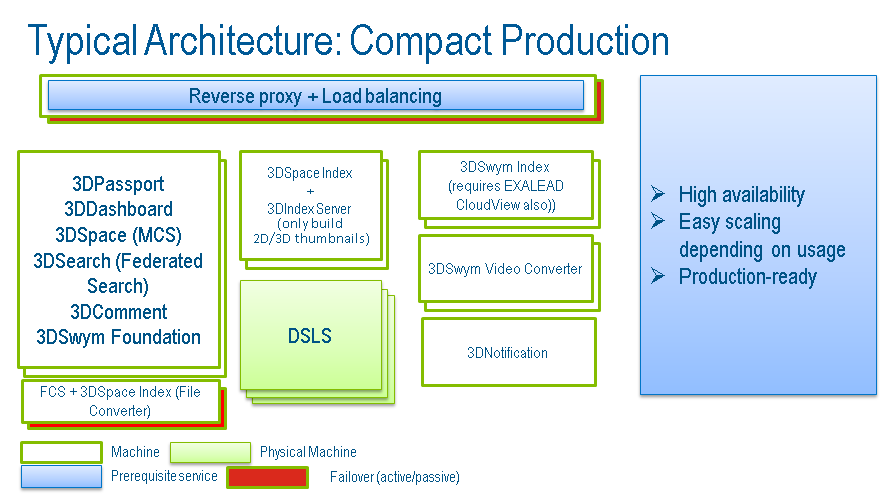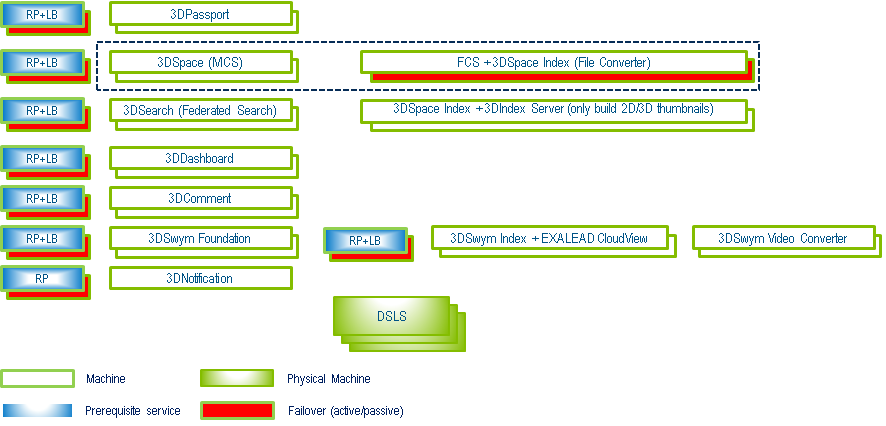Overview | ||
| ||
What is the 3DEXPERIENCE Platform?
The 3DEXPERIENCE platform comprises mainly the following services:
- License Control, based on the DS License Server
- 3DPassport: provides authentication and single sign-on (SSO) services for the whole 3DEXPERIENCE platform
- 3DDashboard: brings information from diverse sources into one customizable web page
- 3DSearch: federated indexing services
- 3DSpace: simplified, powerful management of data and content, including 3DCompass providing unified access to all applications including 3rd party apps, 6WTags providing intelligent, structured, and fast tagging system for refining searches, and indexing of 3DSpace Index objects and 3D indexing, and includes the File Collaboration Server (FCS). This service also accommodates Web apps, and in particular the mandatory ones that are part of the Collaborative Industry Innovator (CSV) role.
- 3DSwym: enables cross-discipline collaboration of users anywhere in the extended enterprise
- 3DComment: provides the ability to interact with other 3DEXPERIENCE platform members by liking content and adding comments to any item
- 3DNotification: gives 3DEXPERIENCE platform users timely updates about activities going on. 3DNotification is the service used to send push notification messages to 3DEXPERIENCE platform users.
A minimal, physical on-premises deployment would require deploying each service on one or more physical machines, depending on the service, and deploying the 3DSpace service (comprising 6WTags and 3DCompass) on the same machine.
Example of 3DEXPERIENCE Platform On-Premises Deployment
In an industrial production context, here is an example of a 3DEXPERIENCE platform on-premises deployment
which also includes load balancers, failover clusters and a reverse proxy:
The above services can be configured according to a variety of criteria, for example:
- number of users
- scalability requirements
- performance requirements
- system management requirements
- project phase
- geographical constraints.
Typically, at deployment each server is associated to a separate physical machine or partition.
The web server could be used as a proxy/load-balancing server and also increases performance by delivering static web content. A hardware load-balancer could also be deployed. The number of application servers depends on the number of concurrent users and the capacity of the application server in terms of the number of CPUs and the maximum amount of RAM. This could also be a single physical machine running multiple server processes.
Also shown in this architecture is the ability to use multiple application servers for scalability. Each application server is configured to run in a "RMI-in-process", or RIP, mode. This consolidates the application server and the kernel into the same JVM for the utmost performance.
Demo-Purpose Deployment
For demonstration purposes, you can install and deploy all platform services on the same machine using the global 3DEXPERIENCE platform installer. All clients (web or
native app) connect to
the same machine.
Compact Production Deployment
You can also choose a compact production deployment by grouping all web-front services together as illustrated below. Data-intensive processes are separated.
A compact production deployment offers high availability, easy scaling, and is production-ready.

Separated Production Deployment
A separated production deployment, in which each service and sub-service is deployed on a separate machine, offers high availability, scaling, is highly configurable and more complex to operate, and is also production-ready.

The following two configurations are not supported:
- 3DEXPERIENCE platform on Windows cannot access SQL Server on Linux
- 3DEXPERIENCE platform on Linux cannot SQL Server on Windows.